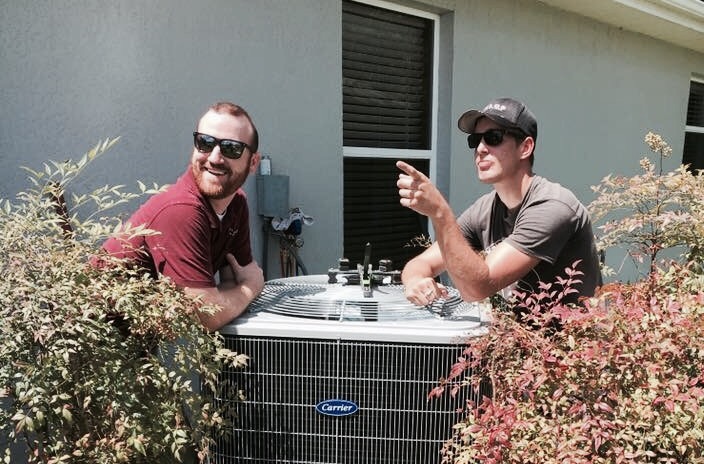Get Tech Tips
Subscribe to free tech tips.
Wide, Narrow, Wide Diagnosis

When you walk up to a piece of equipment, you want to follow a process to ensure that you accomplish five things:
#1 – You diagnose the fault correctly.
#2 – If possible, you find the “why” of the failure.
#3 – Find any other problems or potential problems with the system that can cause inefficiency, low capacity, failure, safety, or indoor air quality issues.
#4 – Communicate clearly with the customer and office about these issues via paperwork or verbal communication.
#5 – Execute and repair the issues efficiently and professionally.
To accomplish these, I recommend looking at the equipment with a wide, narrow, wide mindset.
First “Wide”
First, speak with the customer, read the call history, and understand the past failures and the customer's concerns. Look at the equipment and look for any obvious signs of issues, like oil stains, corrosion, rubbing wires, bloated capacitors, etc.

“Narrow”
Then, go narrow and FIND THE CURRENT PROBLEM. The difference between a “sales tech” and a real service tech is the ability to diagnose the problem at hand quickly and accurately, and find the likely causes of the failure.


Final “Wide”
Finally, once you find THE problem, go wide again and look for any other problems BEFORE communicating with the customer. Look at coils, contactors, capacitors, filters, belts, wire connections, and potential rubouts. Then, check coils and the accumulator for oil stains, etc.


When looking wide, take the mindset that:
- The system was likely installed poorly or incorrectly, to begin with.
- Every other repair made to the unit was done improperly.
This will put you in the mindset to double-check everything.
Now, you are ready to talk to the customer and make repairs with confidence.
—Bryan











Comments
Buenos consejos.
Buenos consejos.
Thank you, I have recently been searching for details about this topic for ages and yours is the best I have discovered so far.
Thank you, I have recently been searching for details about this topic for ages and yours is the best I have discovered so far.
I’m amazed by the quality of this content! The author has obviously put a huge amount of effort into investigating and arranging the information. It’s refreshing to come across an article that not only gives useful information but also keeps the readers hooked from start to finish. Kudos to him for creating such a brilliant work!
I’m amazed by the quality of this content! The author has obviously put a huge amount of effort into investigating and arranging the information. It’s refreshing to come across an article that not only gives useful information but also keeps the readers hooked from start to finish. Kudos to him for creating such a brilliant work!
The very heart of your writing whilst appearing reasonable at first, did not really settle very well with me after some time. Somewhere within the paragraphs you managed to make me a believer but only for a while. I however have got a problem with your leaps in logic and you would do nicely to fill in all those gaps. When you can accomplish that, I would definitely end up being fascinated.
The very heart of your writing whilst appearing reasonable at first, did not really settle very well with me after some time. Somewhere within the paragraphs you managed to make me a believer but only for a while. I however have got a problem with your leaps in logic and you would do nicely to fill in all those gaps. When you can accomplish that, I would definitely end up being fascinated.
I got to admit, this post is fairly good. Actually, it’s one of the best I’ve come across in quite some time.
I got to admit, this post is fairly good. Actually, it’s one of the best I’ve come across in quite some time.
http://www.arttree.com.au is Australia Popular Online Art Store. We sell Canvas Prints, Handmade Canvas Oil Paintings, Customer Artwork, Handmade Canvas Portraits. We Offer Year Round Sale and Get Up-to 70 Percent OFF Discount. We give FREE Delivery Australia, Sydney, Melbourne, Brisbane, Adelaide, Hobart and all regional areas. We ship Worldwide at many international locations.
http://www.arttree.com.au is Australia Popular Online Art Store. We sell Canvas Prints, Handmade Canvas Oil Paintings, Customer Artwork, Handmade Canvas Portraits. We Offer Year Round Sale and Get Up-to 70 Percent OFF Discount. We give FREE Delivery Australia, Sydney, Melbourne, Brisbane, Adelaide, Hobart and all regional areas. We ship Worldwide at many international locations.
Gracias por leer el artículo!
Gracias por leer el artículo!
To leave a comment, you need to log in.
Log In